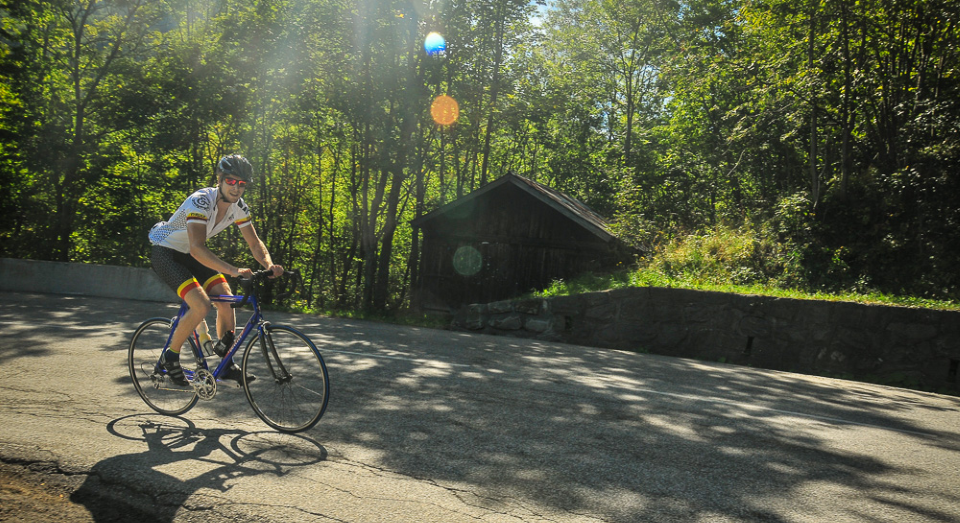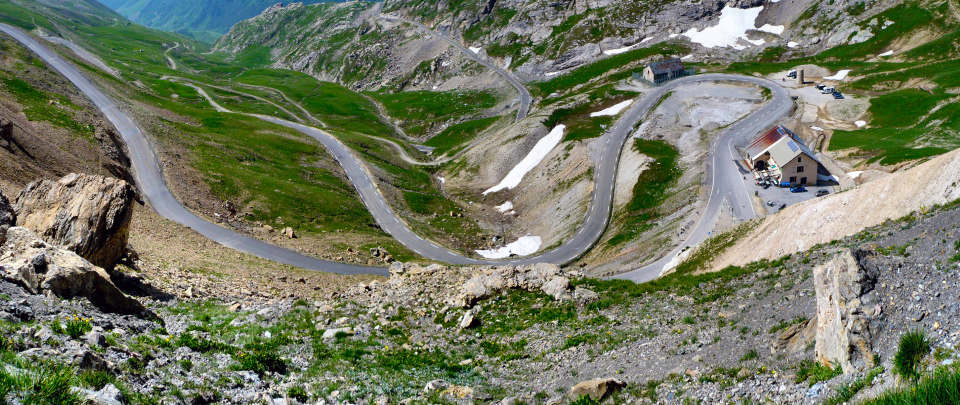Tackling the 2018 Look Marmotte Gran Fondo Alps
For many cyclists the Look Marmotte Gran Fondo Alps is the ultimate European Gran Fondo and one of the toughest bike rides in the world. Next year's event takes place on July 8th 2018, entries open in November and sell out in less than a day!
Around 7,500 Gran Fondo riders take part each year on the first Saturday in July, which falls on July 8th 2018 next year.
The fastest riders can complete it in around 5 hours 45 minutes and the slowest, taking anything up to 14 hours. There’s a lot of training and preparation required to complete this challenge, especially if you haven't ridden in the high cols of the Alps, Dolomites or Pyrenees.
La Marmotte features three HC (Haute Category) climbs over its 174km route and has a total of 5,180 metres of climbing, making it one of the toughest courses of any Gran Fondo in the world.
From the main street in Bourg d'Osians, La Marmotte starts with the climb of the Col du Glandon, which is 27.5km long with an average gradient of 4.5% to a height of 1,924 metres. First you'll have a warm up along the valley until you turn right and head towards the base of the climb at Allemont.
You'll hit the lower dam and the gradient rises to around 7%. It levels out as you cross the water, and here you’ll hit the first section of the climb. Make sure you pace yourself as this is a long drag up through the woods which can get steeper, so it's essential not to go into the red. Make sure you start drinking.
At the top of this section, at the beautiful small village of Le Rivier d'Allemont, there is a short steep descent with around three hairpin bends. Take it easy on the descent.
You're now into the second section, as you head to the top dam of Lac de Grand Maison. This is steep at around 10%. Although this is a harder section - it's unforgettable, as it winds up the side of the dam wall with super tight hairpin bends.
Once you reach the top of the dam, the trees fade away and the view opens up across the dam and windswept grass meadows full of alpine wildflowers. The road is less steep although it can be windy here, so try and sit in a group and try and think about eating something. Up in front you'll see the Chalet Hôtel Col du Glandon which marks the top of the Col d’Glandon.
You’ll sweep around the hotel and up the final metres to the top of the Glandon. This is also first feed station.

From here you’ll drop down the steep descent of the Col du Glandon. This part of the course is not timed due to safety reasons and it also gives you time to recover and get some nutrition inside you. Probably not on the upper slopes as they contain hairpin descents - so stay focused and take it easy. Below the football field the gradient isn't as steep or twisty so this would be a good place to start eating
It’s all downhill to Saint-Etienne de-Cuines where you’ll turn right along the valley through Saint-Jean-de-Marienne to Saint-Michel-de-Marianne to the base of the Col du Telegraph.
The Col du Telegraph contains around 900 metres of climbing at an average of 7.3% and tops out at 1,566 m. Pace yourself as it 11.5 kms to the top. There is a small descent into Valloire, where you’ll meet the second feed station. It’s vital that you are fully hydrated and well-nourished at this point.
It’s now time to tackle one of the world’s highest, most respected and famous climbs in cycling, the Col du Galibier. The Telegraph and Galibier climbs combined are 35km of almost continuous climbing at an average gradient of 5.5% to a height of 2,642 metres.
Towards the top of the Galibier the gradient gets up to 15% and on a windy or cold day it can be brutal. The weather can turn at a moments notice from warm and sunny to rain, hail and even snow. Make sure you take layers, things like arm warmers and a gilet. The Galibier from Valloire starts very serenely in open alpine meadows. As you near Plan Lachat you are entering the hardest section and the gradient kicks up and remains steep.
Its long steep slog and you won’t see the top until your nearly upon it. Forget the tunnel, you’re going up the final 2 kms to the top of the world!
Make sure you take on water and nutrition at the feed station and don’t hang around too long as you’ll start to cool down, even if it’s a hot day.

The descent off the top of the Galibier is steep with some tight bends. Again take it easy and enjoy the descent down to the Lautaret.
It’s mostly downhill all the way to Bourg d'Oisans. Be careful on the descent as there a few tunnels, one is quite long so remain vigilant. Lights are obligatory through the tunnels.
Bourg d'Oisans marks the final feed station and the start of the final ascent of the legendary 21 hairpin bends of Alpe d'Huez!

For all but the elite riders this is can be a major struggle if the sun is out. The 2013 Marmotte saw riders experience over 40 degrees centigrade on this climb which can sap the strength of the strongest riders. Make sure you have plenty of food and water on board before you start the ascent.
Entries for La Marmotte 2018 open November 6th 2018. Entries sell out in less than a day for 7,500 riders.
We thoroughly recommend the Marmotte to anyone considering riding it!
The organizers of the Marmotte Gran Fondo series, Sports Communication do an excellent job of putting on the event on some of the most iconic, legendary and revered Alpine climbs in cycling and the Tour de France.
This is a Gran Fondo that must be on every rider’s Gran Fondo Bucket List.
Whatever the day may bring, you’ll never ever forget riding the Gran Fondo Marmotte Alps.
For more information, please visit http://marmottegranfondoseries.com










